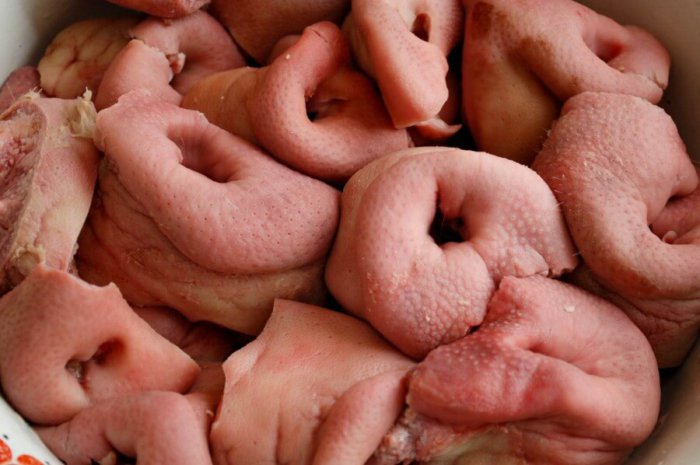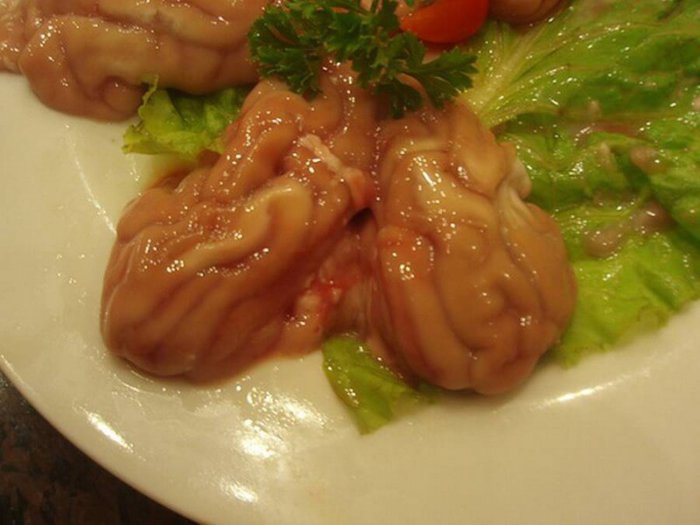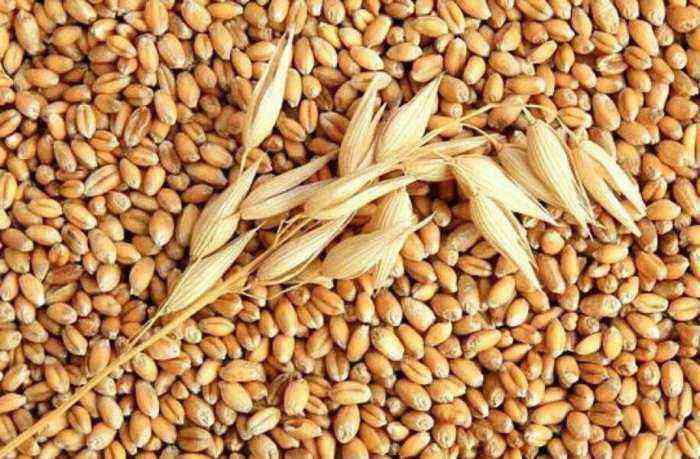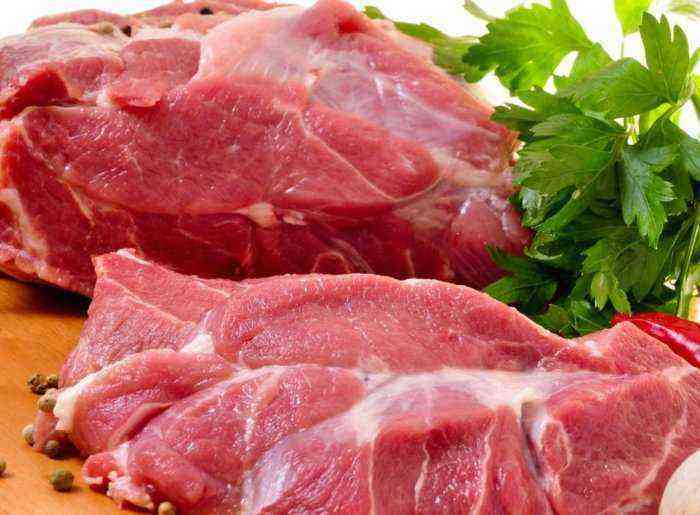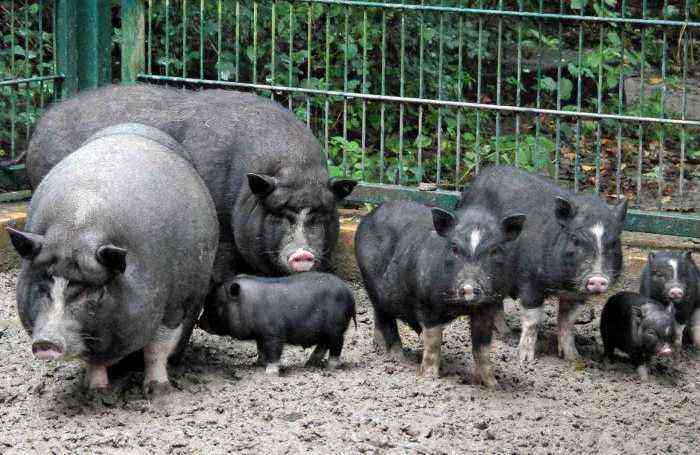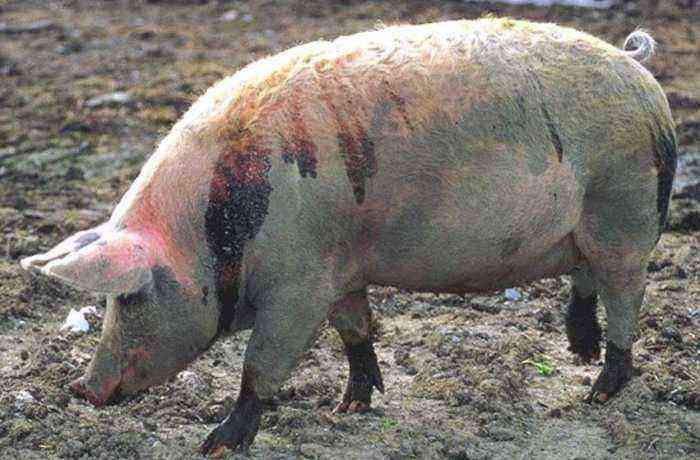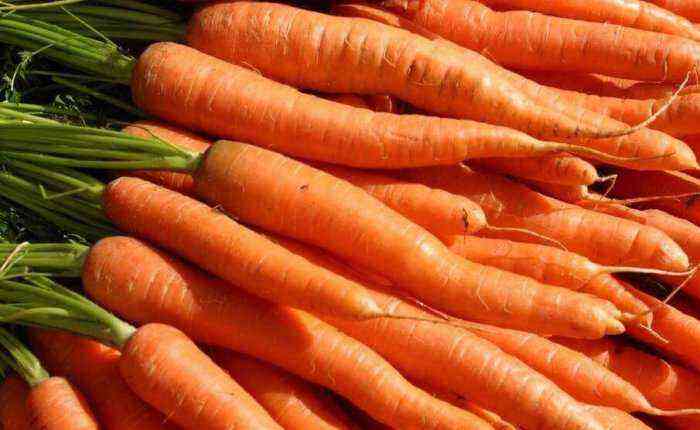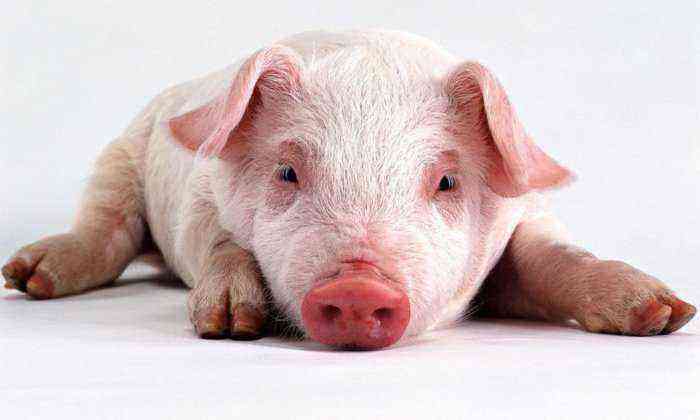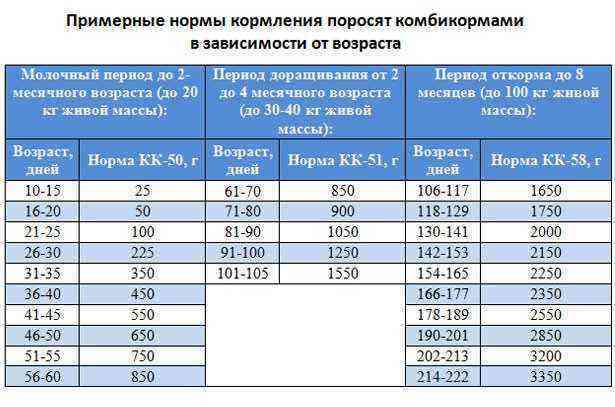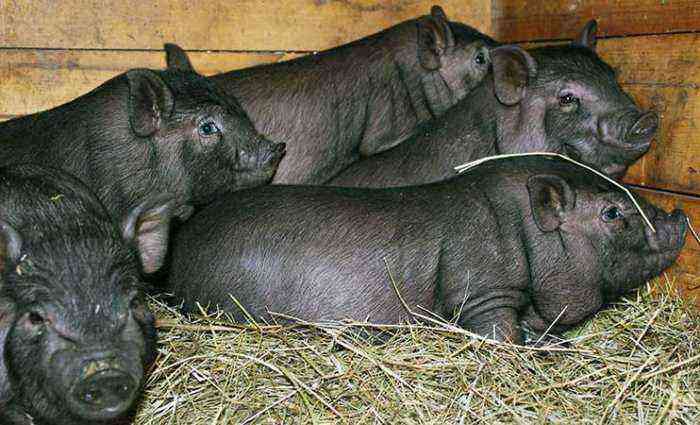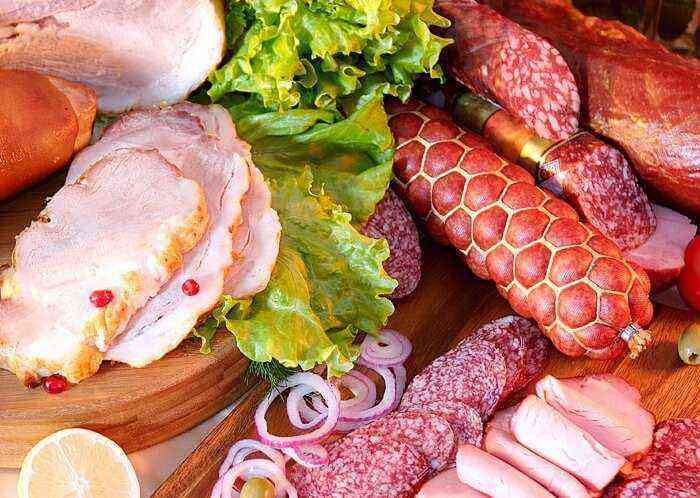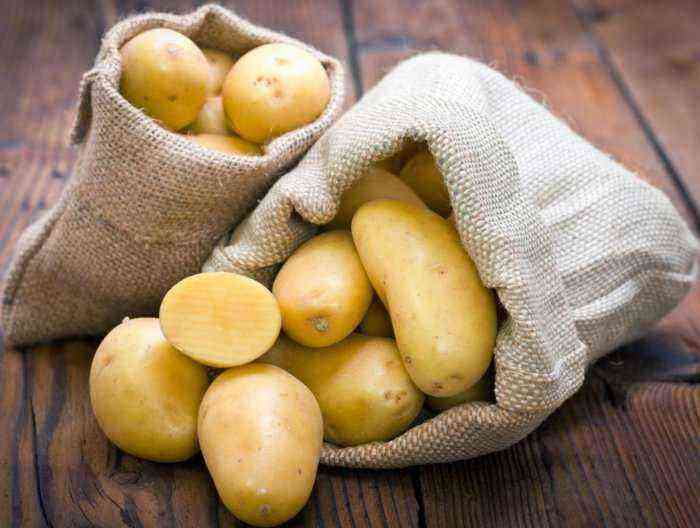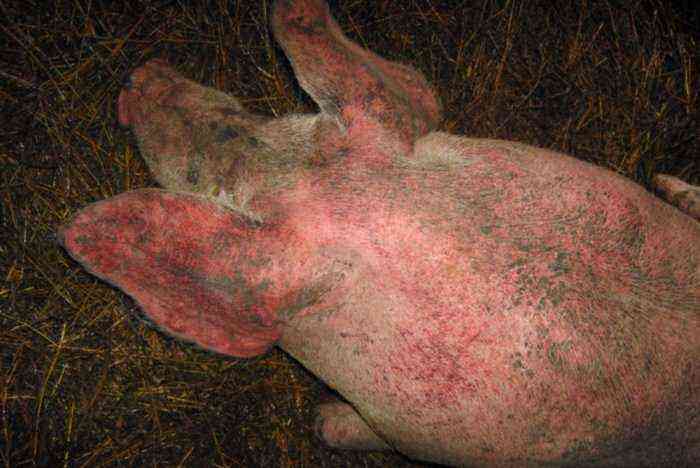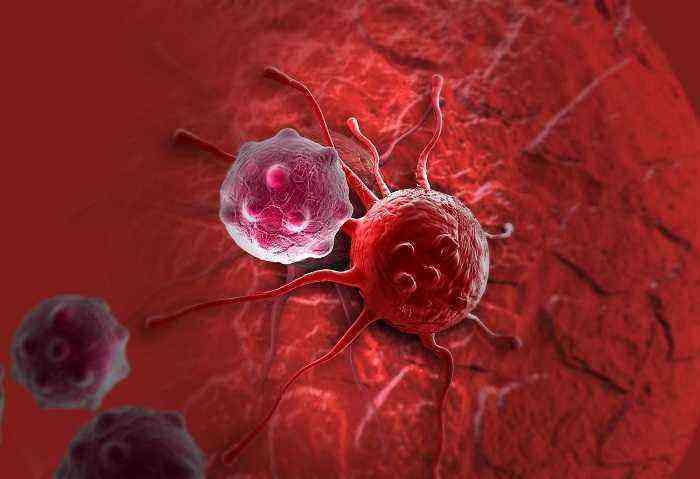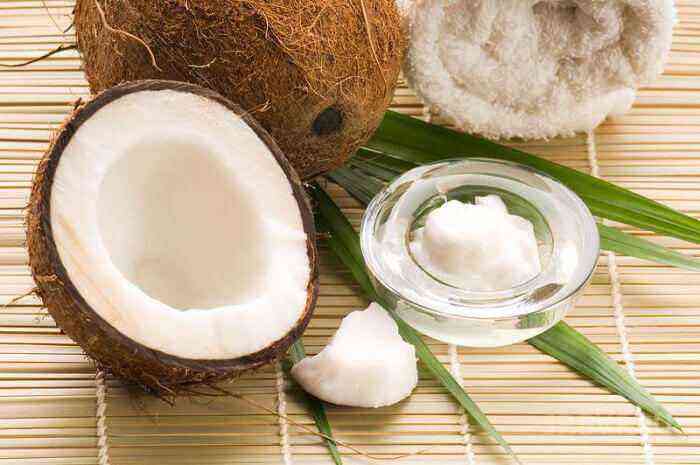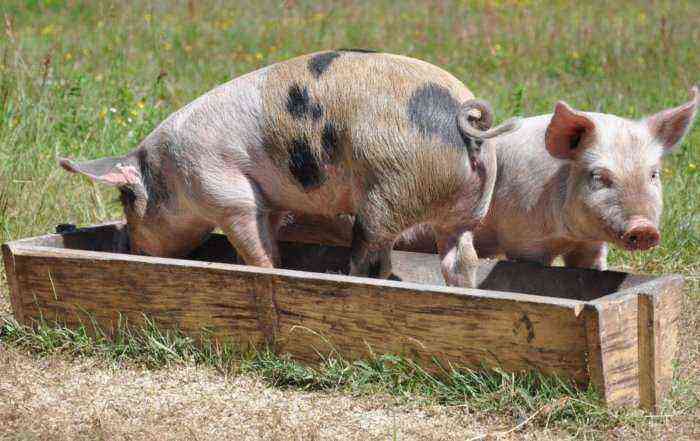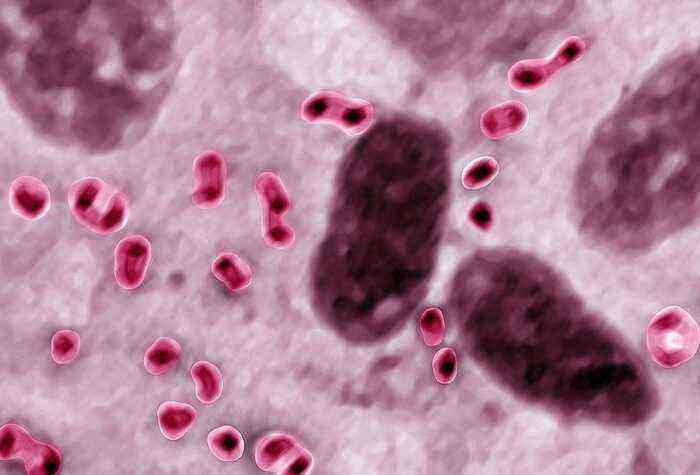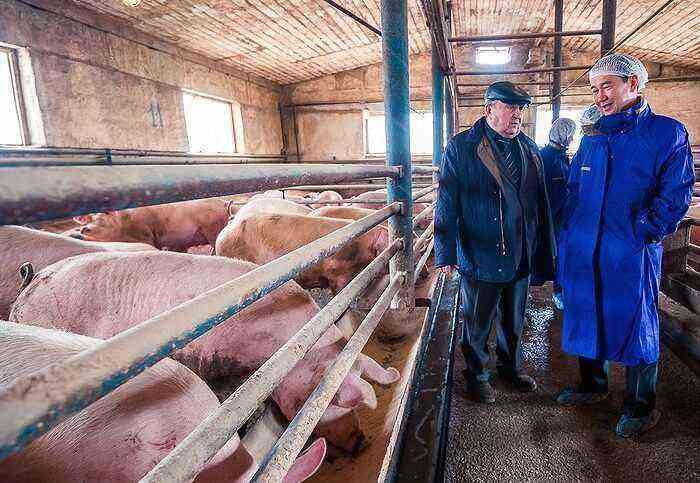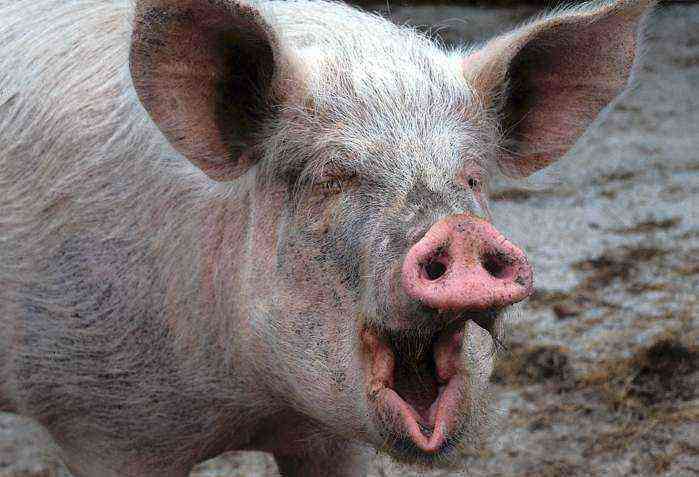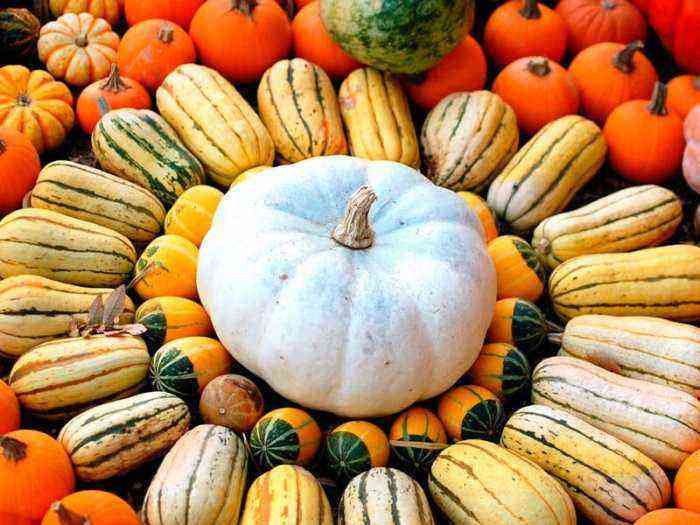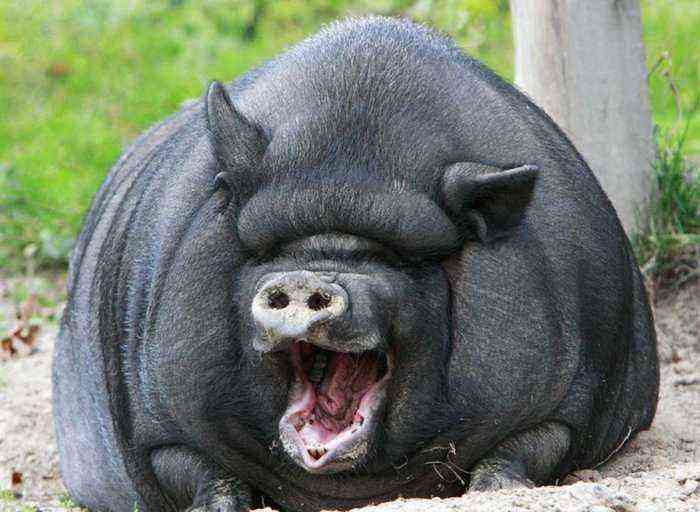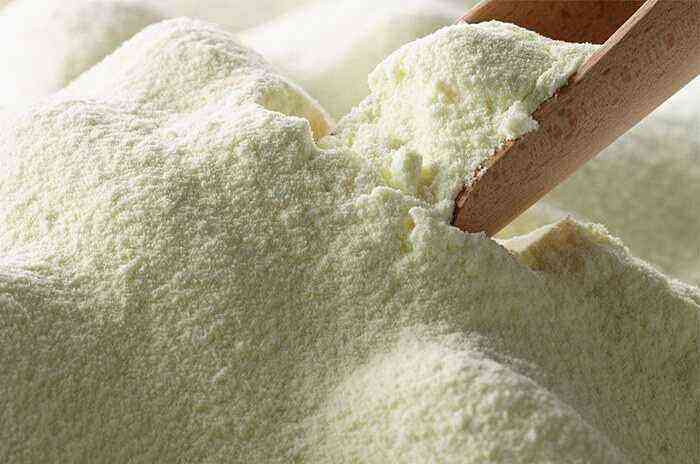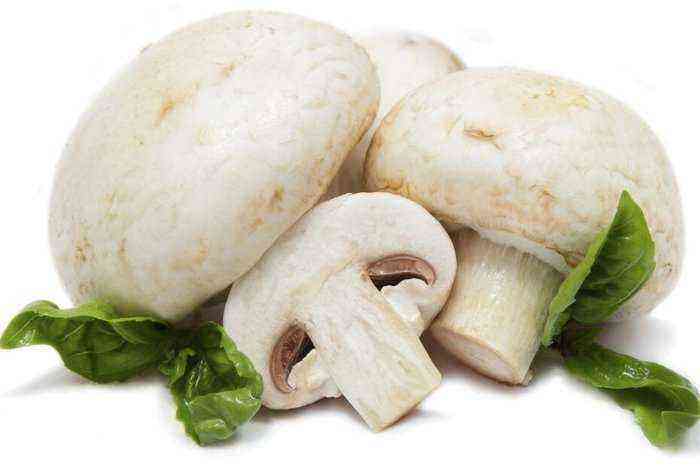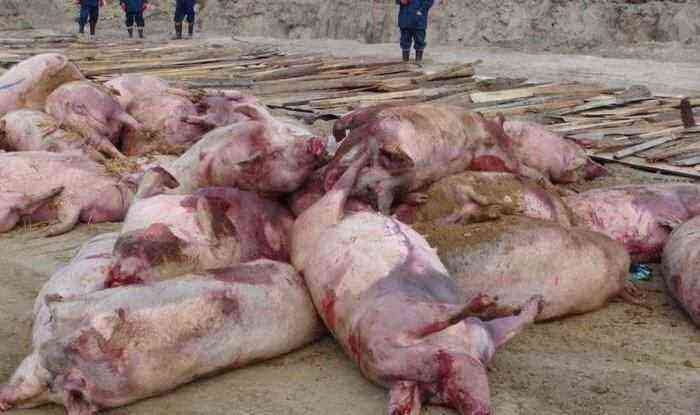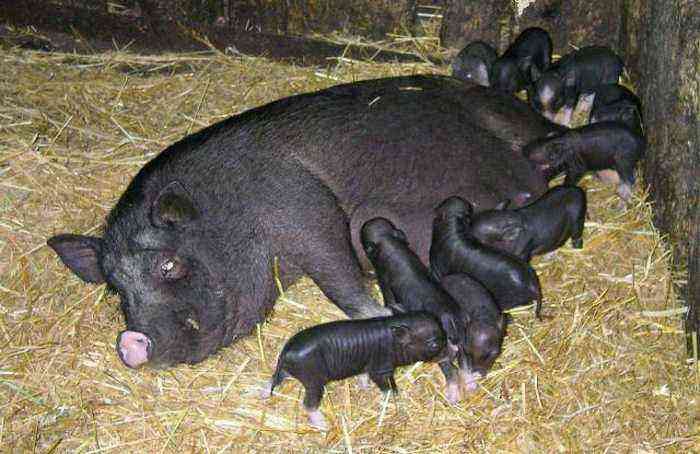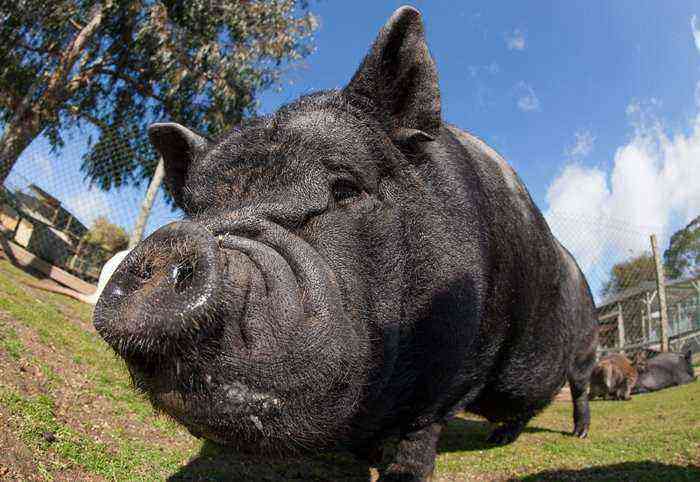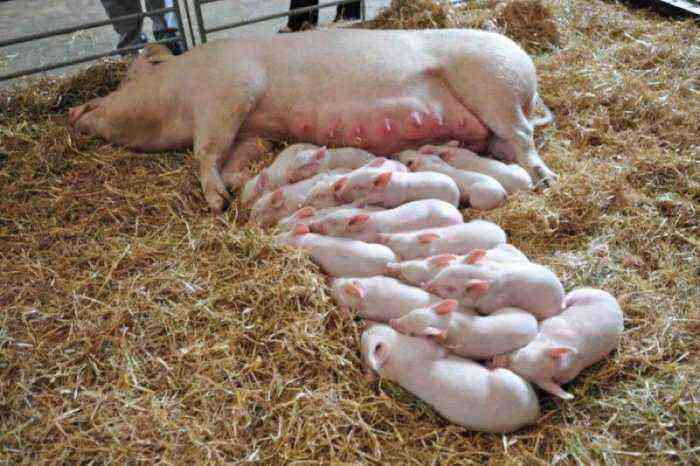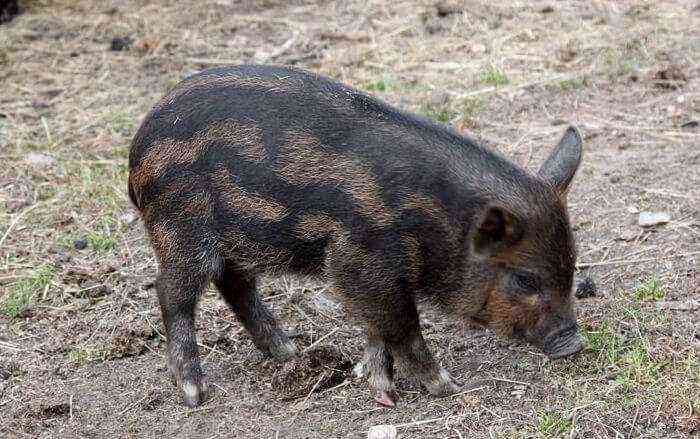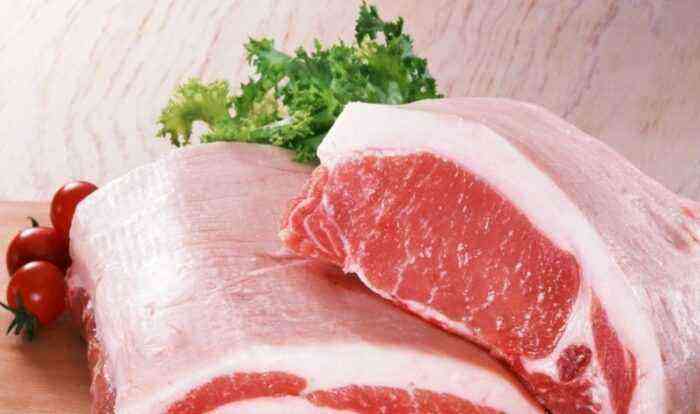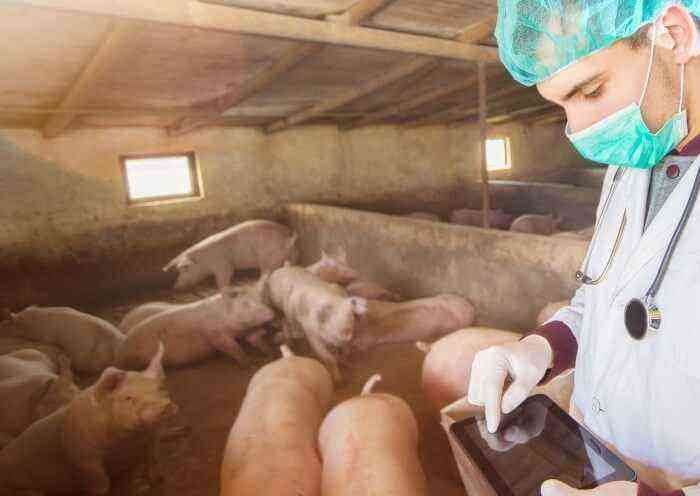The most accessible part of the pork carcass is the head, but you should not treat it with disdain. Knowing how to properly cut a pork head, you can cook a variety of dishes from it. Particularly valued are such parts of it as the snout, cheeks, tongue and ears. Some housewives also use the brain of a pig to prepare delicacies. The rules for cutting and cooking pork head recipes will be presented in this article.
pig head
The process of cutting a pig’s head (step by step instructions)
So, at your disposal is not the most appetizing-looking pork head. The appearance of this part of the carcass is not very attractive, but this is not the main thing. It is important that the meat is fresh and the bristles are well singed. It is not recommended to wash your hair so that the product retains freshness longer, but it is desirable to clean it. Do this with a stiff brush or metal mesh for cleaning dishes, scraping off dirt from each area.
Particular care should be taken to treat the inside of the auricles and the nasal passages of the snout, as a lot of dirt usually accumulates there. To get there, you have to make small incisions. If the dirt is poorly wiped off, it’s not scary – then, before cooking, the meat is soaked, making the cleaning process much easier.
Instructions for cutting a pig’s head in steps:
- First, the ears are separated with a sharp knife.
- At the second stage, the pulp of the cheeks is carefully cut off, moving towards the patch.
- Separate the meat from the frontal part.
- Cut off the pulp from the chin.
- We remove the tongue from the hole formed in the chin area.
- We cut off the near-lingual part from the tongue (it is used to prepare jellied meat or added to minced meat).
- Now you need to divide the head into 2 parts – lower and upper, cutting the area connecting the jaws with a knife.
- We cut off a patch from the top of the head – this is a real delicacy.
- We separate the jaws – they are thrown away.
- The remaining parts of the head – bones with meat are divided into fragments (they are useful for cooking first courses).
- Splitting the upper part of the head, the brain is removed – it can be used to make pate.
pig brain
Pig Head Recipes
All parts of the pig’s head are successfully used in cooking. Dishes made from pig ears, patches, cheeks and tongue are especially popular. Let’s take a look at some interesting recipes to include in your cookbook.
Pork cheeks in the oven
Ingredients:
- cheeks – 1 kg;
- onion peel – 70-100 g;
- salt – 1 tablespoon;
- ground black pepper – to taste;
- peppercorns (allspice and black) – 3-4 pieces each.
- 3-4 garlic cloves;
- laurel leaf;
- vegetable oil – 20 ml.
Soak pork cheeks in cold water for 2 hours, carefully clean them with a brush. We put a pot with 2 liters of water on the stove, add salt, onion peel, bring to a boil. After boiling, put the cheeks in the pan, add spices – bay leaf, peppercorns.
You need to cook the meat for about an hour, almost until tender. At the end of the cooking process, the cheeks are removed from the pan, allowed to cool slightly. Meanwhile, chop the garlic, mix it with ground pepper and a little salt and oil. The meat is rubbed with this mixture, placed in a baking dish and sent to the oven for 20-30 minutes, heating it to 180 degrees.
Piglets with vegetables in sour cream sauce
Ingredients:
- pork patches – 800 g;
- onion heads – 3;
- zucchini – 1 fruit;
- medium-fat sour cream – a glass;
- bay leaf – 2 pcs.;
- salt to taste;
- allspice in the form of peas – 6 pcs.;
- ground black pepper – 0,5 tsp;
- vegetable oil – 20 ml.
Pork snouts
First, the patches should be soaked and cleaned well. Then they are cut into 2 parts and sent to a pot of water to boil. After boiling, the first broth is drained, and cooking is continued in clean water. Salt is added to it (an incomplete tablespoon per liter), peppercorns, a leaf of laurel. Pork snouts are boiled for one and a half hours until soft.
Ready patches are thrown into a colander, leaving a little broth, let them drain and cool, and then cut into pieces. Heat the oil in a frying pan, send the onion sliced u10buXNUMXbin half rings there. When it changes color to golden, add zucchini cut into large cubes. After frying the vegetables, put the patches in the pan, lightly brown them. Now you can add sour cream, salt to taste, ground pepper. If you want to make the gravy more liquid, you should add a little broth in which the piglets were cooked. Cover the pan with a lid and simmer the contents over low heat for XNUMX minutes.
Advice. As a side dish, this dish can be served with baked or boiled potatoes or rice.
brain salad
Pork brains are an offal widely used in cooking. You can make a delicious salad out of it.
Ingredients:
- pork brains – 600 g;
- salt, bay leaf, peppercorns (for cooking);
- 4 eggs;
- bulb – 1;
- fresh cucumber – 1;
- mayonnaise – 2 tbsp. l .;
- mustard – 1 tsp;
- lemon juice – 10 ml.
Pig brains for salad
We send the brain to boil in salted water with the addition of salt and spices. After boiling, reduce the fire to medium, wait 10-15 minutes, after which we remove the offal from the broth and cool. We cut the brains into a medium cube. Boil the eggs, grind in a convenient way. Cucumber cut into small pieces of oblong shape. We clean the onion, chop it into quarters of rings, pour lemon juice. Marinate onion slices for 15 minutes. In a salad bowl, mix the brains, cucumber, eggs and onions, after draining the marinade. Season the dish with mayonnaise and mustard, decorate with green onions.
Advice. For decoration, the finished salad is crushed with chopped green onions.
Do not ignore the pig’s head, all its parts, except for the jaws, can be used in cooking, the main thing is to cut it correctly. There is a lot of cartilage in this part of the carcass, which is suitable for boiling jelly and preparing brawn, and the tongue, brains and cheeks are considered a delicacy.

